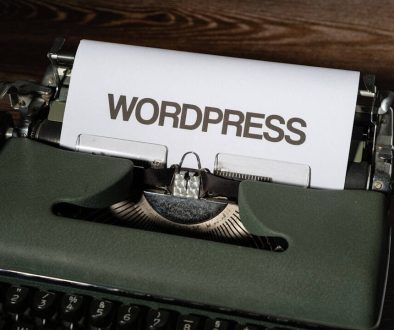How Users Deleted Old Pinterest Accounts When Password Resets Always Redirected to a Dead Email Address
In the ever-evolving landscape of social media, it’s not uncommon for users to find themselves locked out of old accounts they no longer use—or even remember. For Pinterest, one of the web’s most popular visual discovery platforms, this issue became especially frustrating for users trying to delete old accounts tied to now-defunct email addresses. Whether due to outdated contact information or long-abandoned sign-in credentials, many users hit a dead end attempting to reclaim control over their digital footprint.
TL;DR
If you’ve tried deleting an old Pinterest account but couldn’t reset the password because the associated email address no longer exists, you’re not alone. Many users faced this exact issue, and while Pinterest doesn’t offer an easy automated process for such cases, there are alternative methods that people used to resolve it. These include direct support contact, use of linked third-party logins, and occasionally, legal data removal requests. Patience and persistence are key—but success is possible.
Why Users Wanted to Delete Old Pinterest Accounts
Before diving into the technical hurdles, it’s helpful to understand why users wanted these old accounts gone in the first place:
- Privacy concerns: Old boards and pins might reveal personal interests or data people no longer wish to be public.
- Cluttered search results: Some users found their name or creations listed in old accounts that didn’t reflect their current brand or image.
- Account duplication: People wanted to streamline multiple accounts down to just one active profile.
Regardless of their reasons, these users often encountered a common blocker: they couldn’t log into the account to delete it.
The Root of the Problem: Dead Email Addresses and Lost Passwords
Pinterest, like many platforms, uses your registered email to verify your identity. When attempting to reset a password, a verification link is sent to that email. However, if the email account you signed up with is no longer active—maybe it was a school address, a job-linked email, or a domain you no longer own—you’re stuck.
To complicate matters, Pinterest doesn’t allow deletion of accounts without logging into them. This means that users who no longer had access to their sign-up email were essentially locked out entirely, with no option to prove ownership via alternate verification.

Finding a Solution: What Worked for Users
Even though Pinterest’s official stance on this situation offered little help, resourceful users turned to a few effective strategies to reclaim their control. Below are the most frequently used solutions:
1. Contacting Pinterest Support Directly
Step-by-step strategy:
- Navigate to Pinterest’s Help page.
- Choose the category: “Login and account access” or “Deactivating or deleting an account.”
- Select the option that fits your situation, such as “Can’t log in” or “Account associated with an old email.”
- Use the form to explain your situation. Be polite, concise, and provide any details you can (e.g. approximate Pinterest username, types of boards, previously pinned content).
While success varied, users who were persistent and clear in their messages sometimes received personalized help—including deletion assistance—from a support representative.
2. Using Linked Social Media Accounts
If you originally linked your Pinterest to a Google or Facebook account, there’s a chance you could still get in without the email:
- Go to the Pinterest login page and choose “Continue with Google” or “Continue with Facebook.”
- If successful, go to Settings → Account Management → Delete Account to remove the account permanently.
However, this only works if those third-party accounts still have authorization to access your Pinterest profile.
3. Filing a Data Removal Request
For users in jurisdictions with strong data privacy laws (like the EU’s GDPR), another route involved submitting a formal data erasure request. This typically entailed:
- Heading to Pinterest’s Privacy Policy and locating their data protection contact information.
- Writing a concise but formal letter asking for deletion of the account associated with X email address as per applicable law.
- Included any identifying information you had: username, pins, URLs, etc.
While this route was bureaucratic and took weeks—or even months—some users reported successful account deletions.
Creative Workarounds That Helped Some Users
Determined users across the internet shared anecdotes of unique methods. A few of the most interesting ones include:
- Google search sleuthing: Digging up the username or email combination via cached pages or shared pins.
- Trying password recovery methods for the old email: In rare cases, people regained temporary access to their defunct email accounts by contacting their old email service provider.
- Using Pinterest browser cookies: Some users still had active Pinterest sessions saved in their browser history, allowing them to log in and make deletions without needing a password reset.
While none of these workarounds were guaranteed, they served as inventive solutions for difficult cases.

Lessons Learned from the Experience
The situation with Pinterest reveals broader truths about internet accounts and data persistence:
- Email permanence matters: Always register important accounts using email addresses you plan to maintain long-term.
- Backup and document logins: Even for minor platforms, keeping a secure list of login credentials can avoid major issues later.
- Platforms need better deletion tools: More services should implement secondary verification options or allow authenticated deletion requests outside of login.
For Pinterest, this situation highlighted a weakness in user autonomy. While the intent is to safeguard accounts, it can unintentionally trap users from taking control of their data.
Future Improvements Pinterest Could Consider
To prevent future frustrations, Pinterest—and similar services—could consider implementing the following:
- Alternate verification methods: Such as phone number, two-factor authentication, or identity proof.
- Account lookup tools: Let users check if their email is tied to an active Pinterest account before trying resets.
- Direct deletion requests via legal ID: Similar to what Facebook offers in special cases.
These changes could strike a better balance between security and user empowerment, especially when managing digital legacies or outdated personal branding.
Conclusion
Trying to delete an old Pinterest account linked to a dead email is more than a minor nuisance—it’s a digital deadlock. However, as countless users have proven, there are pathways to reclaiming or removing these accounts. It requires time, effort, and occasionally a little ingenuity, but it is not impossible. As digital platforms evolve, hopefully companies like Pinterest will adapt to make situations like this less burdensome for their users.
- How Users Deleted Old Pinterest Accounts When Password Resets Always Redirected to a Dead Email Address - November 28, 2025
- Adobe Premiere Pro Showing Media Pending Forever After Import and the Cache Purge Method That Forced Clips to Load - November 27, 2025
- How Much Do Ultrasound Techs Make in 2025? - November 27, 2025
Where Should We Send
Your WordPress Deals & Discounts?
Subscribe to Our Newsletter and Get Your First Deal Delivered Instant to Your Email Inbox.



